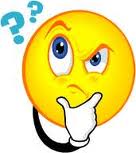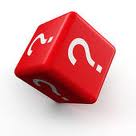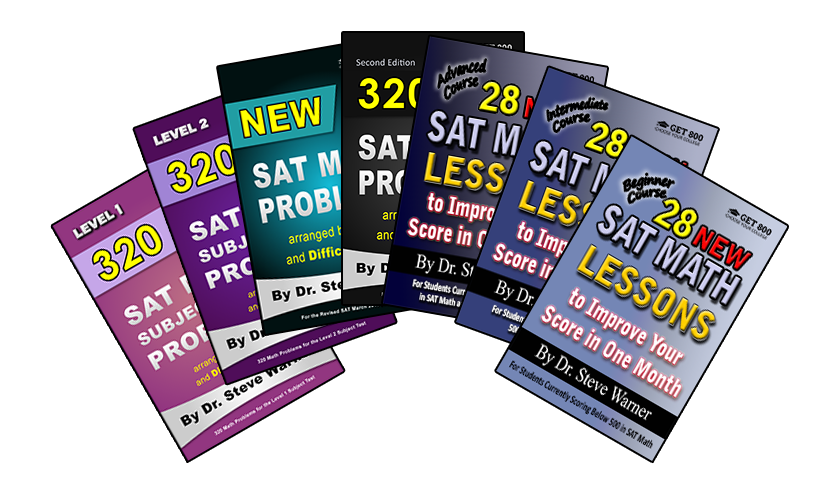 The Art Of Guessing On The SAT
The Art Of Guessing On The SAT

Important Note: This article is no longer relevant to the SAT. The new SAT does not have a guessing penalty, and therefore students should no longer leave any questions blank.
Tutors tend to disagree on what the best SAT guessing strategy is for math problems. Some say you should take a guess on a multiple choice question as long as you can eliminate one answer choice. Others are more cautious and advise their students not to guess unless they can eliminate at least two choices. Still other tutors recommend not guessing at all.
Most tutors suggest always taking a guess on grid-in SAT math questions since you are not penalized for guessing wrong. But a few tutors say not to bother since the likelihood of guessing these correctly is so small.
The main purpose of this article is not to argue the case for any of these philosophies, but rather to give you the facts. The reality is that a case can be made for most philosophies. In truth the system that works best really varies from student to student. For example some students are simply good guessers. For whatever reason, perhaps some strong intuition, they guess many questions correctly. This type of student may want to guess more freely than a student who is easily tricked.
Note: Be cautious when using intuition as an SAT guessing strategy. Harder questions are specifically designed to trick students. Therefore, using “intuition” frequently leads to wrong answers.
For more information on when to use intuition on the SAT visit this page: Should You Go With Your First Instinct to Take Guesses in SAT Math?
My personal philosophy
I generally recommend that a student guesses on a multiple choice question if the student can eliminate at least one answer choice. Of course the student should eliminate as many choices as possible before taking their final guess. Furthermore, I suggest that a student guesses on every grid-in question they do not know the answer to. Each student should be prepared with a “default” number in their head that they can simply put down as their answer for any grid-in question they do not know. This way little time is wasted on these guesses. The student should of course take a more educated guess if they have some idea as to how large the answer should be.
I should point out that I occasionally veer away from this philosophy when working with a particular student if I discover that this philosophy is hurting that individual’s score. So for me, this is not set in stone. But as a general rule, I think it is a good philosophy to adopt.
 Two guesses are completely free
Two guesses are completely free
From here on, I’m going to focus my attention on the three math sections of the SAT, although most of what I say applies to each of the other two subject areas as well.
Across all three math sections of the SAT you actually get two guesses that are completely free. How is this possible? Well, you lose .25 of a point for each these SAT math questions you get wrong. So, if you guess two questions wrong you will lose .5 of a point. Now, your raw score is computed by adding up all the questions you got right, and then subtracting .25 of a point for each question you got wrong, and then rounding to the nearest whole number. Thus, if you get two questions wrong across all 3 math sections, even though you lose .5 of a point, in the end this is rounded up, and your net loss is 0.
Here is a specific example:
Suppose you get 17 multiple choice SAT math questions right, 5 grid-ins right, 2 multiple choice questions wrong, and 5 grid-ins wrong. Your unrounded score is then 17 + 5 – .5 = 21.5 (note that you are not penalized for the 5 incorrect grid-ins). But this is rounded up to a 22. Therefore you get the same score whether you take those two guesses or not. So in theory it would seem that you should always make sure to take two guesses – after all, they are free.
So should you always take these two free guesses in practice? Well that depends on the type of student you are. If you tend to make careless errors, then these guesses may no longer be free. Even if you make just one careless error, then making two wrong guesses will bring down your score since you would now deduct .75 of a point, and this will be rounded down. But if you are the type of student that never makes careless mistakes, then perhaps you should be taking advantage of your two free guesses.
To learn how to eliminate careless errors in SAT math visit this page: Stop Making Careless Errors In SAT Math
Also be careful of test-taking anxiety. This may cause a student to make careless errors on the actual exam even if it never happens on practice tests. Try to be aware of the type of test taker that you are.
To learn how to eliminate test taking anxiety visit this page: Eliminating Test Taking Anxiety On The SAT
 Eliminating one choice
Eliminating one choice

Let’s say that you take guesses on 4 questions, and for each one you have eliminated one answer choice. Basic probability says that you will probably get 1 of these questions correct, and 3 wrong (see below for the actual probability). So the most likely scenario is that you gain 1 point, and lose .75 of a point. That means that you are up .25 of a point. This will have no net effect on your grade, but if you are lucky enough to get 2 right, then your net gain is 1.5 points, which will be rounded up to 2 full points. This probably means an increase of 20 points on the SAT.
Now let’s say that you do the same guessing on 7 SAT math questions. Again, if you get only 1 correct, and 6 wrong, then the net effect is 1 – 1.5 = -.5. So your net loss is .5 of a point. This will be rounded up to a net loss of zero, and you will NOT be penalized at all. The odds of you getting 2 out of 7 right are actually decent, and this WILL improve your score.
Some sophisticated computations
This section is for the more advanced math student that wants to see some actual probability. Note that the computations done in this section are more difficult than anything you will see on the SAT.
So let’s go back to the first situation from the last section. You take a guess on 4 questions, and for each one you have eliminated one answer choice. What is the probability of guessing one of these SAT math questions right?
Well, the probability of guessing the first one right is .25.
The probability of guessing the first one wrong and the second one right is (.75)(.25) .
The probability of guessing the first two wrong and the third one right is (.75)(.75)(.25) = (.75)2(.25).
The probability of guessing the first three wrong and the fourth one right is (.75)3(.25).
Adding these up yields .25 + (.75)(.25) + (.75)2(.25) + (.75)3(.25) = .684 (rounded to the nearest thousandth).
Now for the second situation. Let’s compute the probability of guessing 1 right out of 7.
.25 + (.75)(.25) + (.75)2(.25) + (.75)3(.25) + (.75)4(.25) + (.75)5(.25) + (.75)6(.25) = .867 (rounded to the nearest thousandth).
A good math student might notice the above two sums as geometric series.

Dr. Steve
Get 800
p.s.: Here is a special offer on all of my SAT math prep books: SAT Math Prep Books Full Bundle

